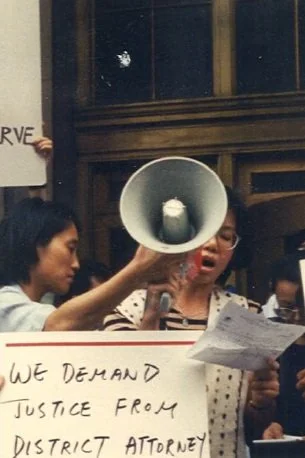A Seat at the Table: LGBTQ Representation in New York Politics, Exhibit at LaGuardia and Wagner Archives
Reviewed by Danica Stompor
The beating heart of Gourjon-Bieltvedt and Petrus’s exhibit is turning these testimonies into a fervent call to young people for optimism and for action…It has been far from a linear path, but for many people my age and younger, the past decades have featured an enormous increase in visibility and significant legal wins for queer people, particularly in New York. A Seat at the Table inserts us into the lives and tactics of the city’s elected officials who made these gains possible while resisting the attitude that progress is inevitable…A Seat at the Table is attuned to the small moments that transform residents into leaders.
Read MoreThe Rise and Fall of Protestant Brooklyn: An American Story
Reviewed by Jon Butler
Between the Civil War and 1900, "old" Brooklyn both prospered and declined. Real estate developers and the new Brooklyn Bridge swelled Brooklyn's tony neighborhoods with middling and upper-class commuters to Manhattan….The New York Times may have been condescending when it labelled Brooklyn "that moral suburb" before the Brooklyn Bridge dedication, as Blumin and Altschuler put it. But it hadn't missed the Protestants' aim.
Read MoreReview: Hugh Ryan’s The Women’s House of Detention: A Queer History of a Forgotten Prison
Reviewed by Rachel Corbman
Fifty years ago, an art deco prison towered over Greenwich Village. Between the years of 1929 and 1971, tens of thousands of women and trans masculine people passed through the Women’s House of Detention, waiting for a trial or serving sentences. In The Women’s House of Detention: A Queer History of a Forgotten Prison, Hugh Ryan convincingly demonstrates why this largely forgotten prison matters to queer history. Despite Ryan’s central focus on the so-called House of D, The Women’s House of Detention does not read like an institutional history. Rather, Ryan weaves together the life histories of dozens of women and transmasculine people, following them before and after their time at the House of D.
Read MoreAnti-Asian Violence and Acts of Community Care from the 1980s to the Present
Vivian Truong Interviewed by Hongdeng Gao
Today on the Blog, Gotham’s editor Hongdeng Gao speaks with Vivian Truong, author of “From State-Sanctioned Removal to the Right to the City” and a core committee member of the A/P/A Voices: A COVID-19 Public Memory Project. Truong discusses segregationist and police violence against Asian American, Black and Latinx residents in southern Brooklyn in the 1980s and 1990s and the cross-group, cross-issue movements that developed in response to such violence.
Read MoreNew Collections From the CUNY Digital History Archive
By Stephen Brier
The CUNY Digital History Archive (CDHA), created in 2013 by the American Social History Project/Center for Media and Learning at the CUNY Graduate Center, is committed to preserving and presenting on an open publicly accessible website the history of the City University of New York. Over the past eight years, a number of CUNY faculty, staff, graduate students, and alumni have created a series of curated collections of primary historical sources materials on key moments in CUNY’s rich history.
Read MoreBetween Itself and Brooklyn: Gerritsen Beach’s Developing Identity from the 1920s-1930s
By Michael Sutherland
The sleepy seaside Brooklyn neighborhood of Gerritsen Beach resembles a New England fishing village far more than a neighborhood in the largest city in the United States. Its residents are insular, and rarely want to rely on the City or its officials for help. But, during the neighborhood’s infancy in the early 20th century, the people of Gerritsen Beach were grappling with forming and maintaining their own identity as a neighborhood while attempting to completely and equitably integrate the fledgling neighborhood into Brooklyn and as a part of the city as a whole.
Read MoreInterview: Andrea Mosterman on her book, Spaces of Enslavement
Interviewed by Deborah Hamer
In her new book, Spaces of Enslavement: A History of Slavery and Resistance in Dutch New York, Dr. Andrea Mosterman looks at the lives of enslaved people in New Netherland and Colonial New York from the 1620s until 1820. She shows how central enslaved labor was to individual households and to the colony as a whole and how this dependence on enslaved people shaped life for all New Yorkers — Black and white — over this two hundred year period.
Read MorePodcast Interview: Rockaway Blue
Larry Kirwan interviewed by Robert W. Snyder
Twenty years after the terrorist attacks of September 11, 2001, the novel Rockaway Blue (Cornell UP, 2021) probes the griefs, trauma and resilience of Irish American New Yorkers wresting with the deaths and aftershocks of that terrible day. The book weaves throughout New York City, from the Midtown North precinct in Manhattan to Arab American Brooklyn, but it is so grounded in the Irish section of Rockaway in the borough of Queens that Rockaway itself becomes a kind of character.
Read MoreDid All Jews Become White Folks?:
A Fortress in Brooklyn and Hasidic Williamsburg
Reviewed by Gabe S. Tennen
In A Fortress in Brooklyn: Race, Real Estate, and the Makings of Hasidic Williamsburg, Nathaniel Deutsch and Michael Casper add an important wrinkle into prevalent understandings of American Jewish history. Deutsch and Casper focus their text on the Hasidic Satmar sect and its creation of a “holy city of Jerusalem” in one corner of north Brooklyn, tracing that community from its nascent beginnings in the 1940s into the 21st century. By offering a detailed and crisply written account of this often discussed but largely underexamined group, the authors provide a caveat to nearly fifty years of scholarship.
Read More




